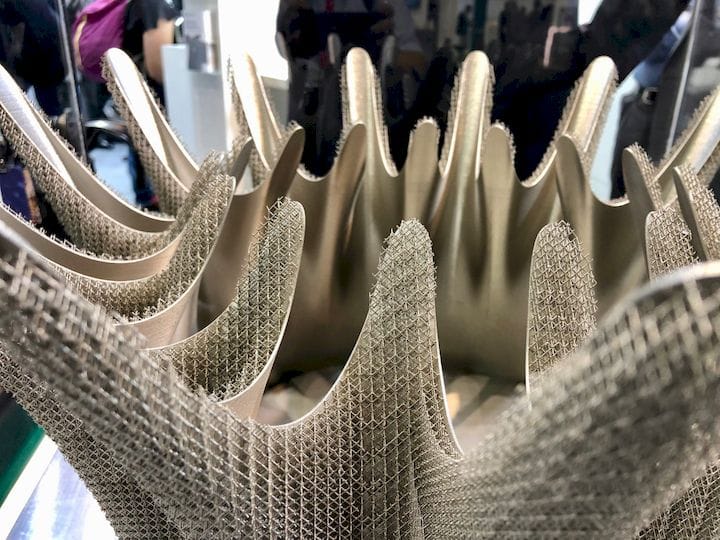![An intricate metal 3D print [Source: Fabbaloo]](https://fabbaloo.com/wp-content/uploads/2020/05/image-asset_img_5eb09b1d8281e.jpg)
This week’s question focuses on how to start a small 3D print business.
Reader Shiv writes:
“I am looking help to setup up 3D print business here in India. I would like to know if there is anything your team can guide or help me on.
I want to setup a studio like where there will be a partition for a display which have all samples showcasing what all can be done with this technology and a separate part where the actual printing will happen. Therefore overall printing solution.”
This is a great question but it requires a large and lengthy answer as there are many aspects to consider.
It seems that the business model here is to allow customers to request 3D prints that would be produced by the business and supplied to the customer. While that sounds straightforward, the devil will be in the details.
First, let’s talk about the printing equipment required. It turns out there’re many different types of 3D printers, each of which has advantages and disadvantages. These may match or not match any given print request. In other words, for a given print request there will be good and bad machines to implement it.
A key question that must be answered is to determine the nature of the client. If this is known, then one could more intelligently select the equipment to serve that type of client.
For example, suppose the target market is local manufacturing industries that may want to receive 3D printed prototype parts. It would then be possible to determine the types of materials they require in these prototypes. The materials could be thermoplastics, or different types of metals.
You can see where this is going; if the clients require metal parts, then you must set up a metal 3D printing operation. On the other hand, if they’re looking for parts made from, say, PEEK, you would have to set up a high-temperature thermoplastic printer.
Similarly, if the target market is local consumers wishing to have simple artistic prints produced, then you might be considering more inexpensive equipment, but a model that provides very good print resolution.
Regardless of the type of printing, it must be validated that the client is willing to pay the right price for the prints. For a given market scenario, you must determine your approximate cost to produce a given print. This would include the amortized cost of the equipment, the material required to produce the print, the labor required to operate the equipment, and any post-processing required.
You must cost the print plus an appropriate margin, and present to typical clients to obtain their feedback on the pricing. Will they buy at that price? And at a regular frequency? You may find they are unwilling to pay that price. If that’s the case you don’t really have a business opportunity.
Assuming you do have a business opportunity, then there are other matters to consider.
One key aspect will be the handling of the digital models to be printed. Where will these digital models come from? Will they be supplied by the client? Or are you expected to produce them? If so, do you have the necessary expertise in 3D CAD tools, or could you find this expertise?
Even if the client is providing the 3D digital files to print, then you must spend some effort to verify that they are truly printable. In my experience many 3D print files submitted for printing are often flawed in some way and require repair. Sometimes the repairs go beyond tweaking and must be referred back to the originator for significant rework.
Another aspect is the manner of attracting clients. In many cases businesses or consumers don’t realize or even understand what 3D printing is or could do for them. It is your job, as the business manager, to somehow make them understand, and in particular want to use your service over others to do so.
This is a very challenging marketing task, even for the largest 3D print companies. The nature of the marketing required would depend greatly on the type of market being addressed as we discussed above. I strongly recommend partnering with a marketing professional who can understand exactly what to do in such situations.
However, the idea of having a showcase is a good one. I’ve seen this done in other locations, where a single design is 3D printed in many different materials, and on many different machines that correspond to the business’ offerings. But, you will have to do some work in marketing to attract people into your showcase to see them.
Finally, it would be wise to review the competitive offerings in the local area. Imagine if someone wanted a 3D print in the way that you intend to offer. How would they do so today without your business existing? Is there an existing competitor or competitors? What specific services do they offer and at what prices? Are there online services that could provide the same service? You would have to compete against them even though they may not be locally present.
Starting a 3D print business may sound like a simple task but in reality it can be quite challenging, as starting any business could be. If you’re able to work through the above and come up with the successful formula, at least on paper, then by all means give it a try.











